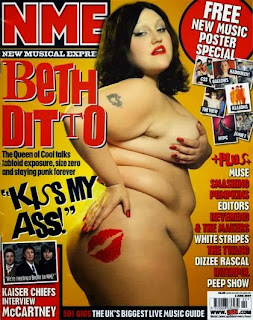After annotating both of the NME and Kerrang Music Magazine front covers, I can clearly identify different features on a front cover magazine. I now have a better understanding as to what features I must include when it comes to creating my own front cover magazine page. In order to make my magazine more appealing to the demographic I will include the features such as a masthead, headline, banner etc. This is so my magazine will look more professional to my audience. From comparing and contrasting both of these magazine front pages I can identify similarities and differences between the pages.
The similarities of these page are that both of these front pages display a Masthead, which is the title of the magazine. It is important that all magazines have a Masthead because the reader can recognise what magazine they are buying and know what genre the magazine is. The pages also have other features that are included on most magazine covers, for example there is a headline to show the main story within the magazines and a bar code to show the price and the overall quality of the magazine. Pugs and Puffs are used on the front page to show the additional content that the reader can find within the magazine and particular buzz words are used to help promote the additional features within the magazine. A main image of the music bands has also been presented on both of the front covers which shows that they are the main focus of the magazine. The image of them appear larger than any other features on the page and takes up most of the page to show that they are the dominant feature within the magazine and throughout.
The differences between both of the front pages are that both magazines are associated with different genres which suggests that the magazines will come across differently to the audience. Both magazine have the same type of house-styles but have different bands that are associated to a particular genre. The NME magazine has a red, white and black house- style and displays the band Mumford and Sons which suggests that the magazine is associated around indie rock as the band displayed are an indie rock band. The Kerrang front cover magazine has the same coloured house-style as the NME magazine however the cover uses more of the black colour in the background of the page. The dark and black coloured background will give the reader the connotation that the magazine is associated around the genre of heavy metal or rock. In addition to this, the red and bold font used on the page also connotes with the chosen genre of the magazine. The band displayed on the front cover of the Kerrang magazine is presented in front of the Masthead and they are appeared with blood running down their faces which connotes that they come along as an aggressive and threatening figure to the audience. This suggests that they are more important than the Masthead itself and are going to be the most dominant feature within the whole of the magazine.







